In the distance, parallel to the Metz-Verdun Road, is a wood lot called the Bois de Villers that will feature later in the battle.
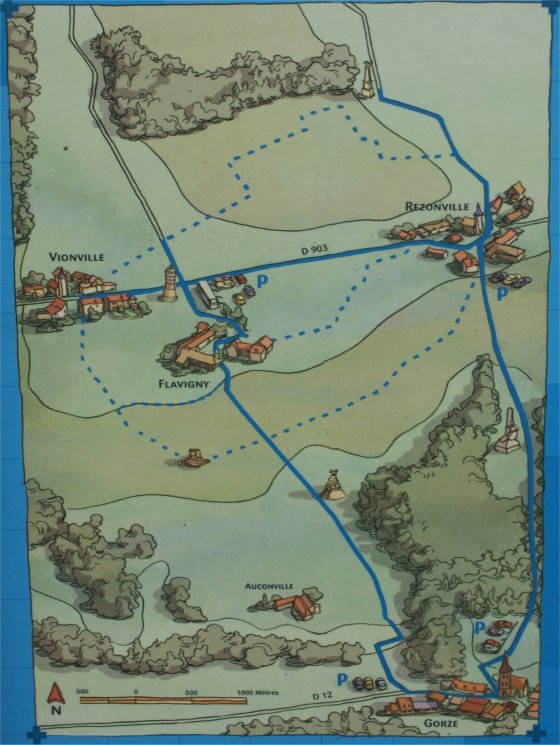


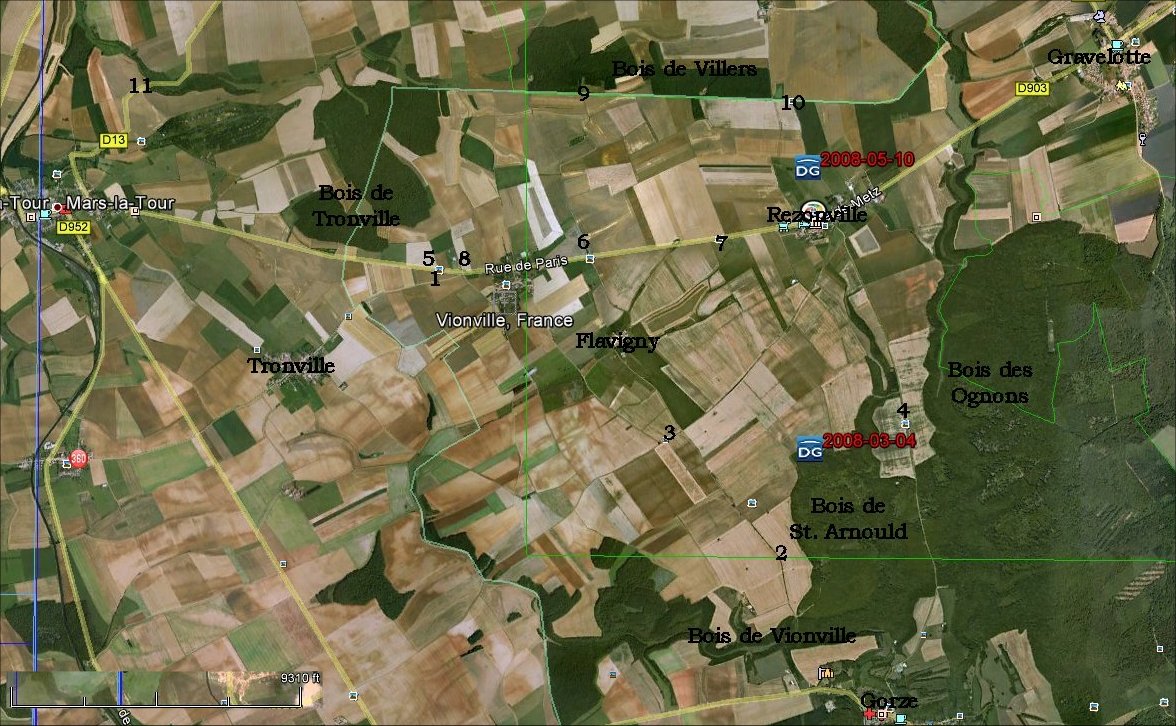



|
The Prussian infantry was further forward facing the French at
Rezonville. The Prussian 5th Cavalry Division was at
Tronville and Mars-la-Tour. The 6th Infantry Division
attacked and captured Vionville and Flavigny, pushing back the French
2nd Corps. The attack was an impressive achievement, and new
Prussian line ranged from the other side of Vionville through
Flavigny. The 5th Infantry Division extended the line to the Bois
de St. Arnould. Despite the length of the Prussian line, it was
thinly held - a bluff. In the distance, parallel to the Metz-Verdun Road, is a wood lot called the Bois de Villers that will feature later in the battle. |
 |







| Continuing parallel to the woods on the right of the
panorama, Bredow's cavalry approached the area where we are now
standing. French cavalry were in reserve in the area behind the
prominent monument in the panorama. These were the cavalrymen who
had been routed that morning near Vionville, and they were eager to
redeem themselves. By this time, Bredow's cavalry was winded and
in some confusion, so the four French cavalry regiments were able to
push the Germans back. The French did not pursue, however, which
is telling. Bredow's brigade lost something over half its men that day. It was the last great cavalry attack in European history, and it has been frequently criticized, but although it was costly, it served its purpose well. It had gained time and it had kept the French from attacking in this sector. Elsewhere, however, there was still a grave danger to the Prussians. |
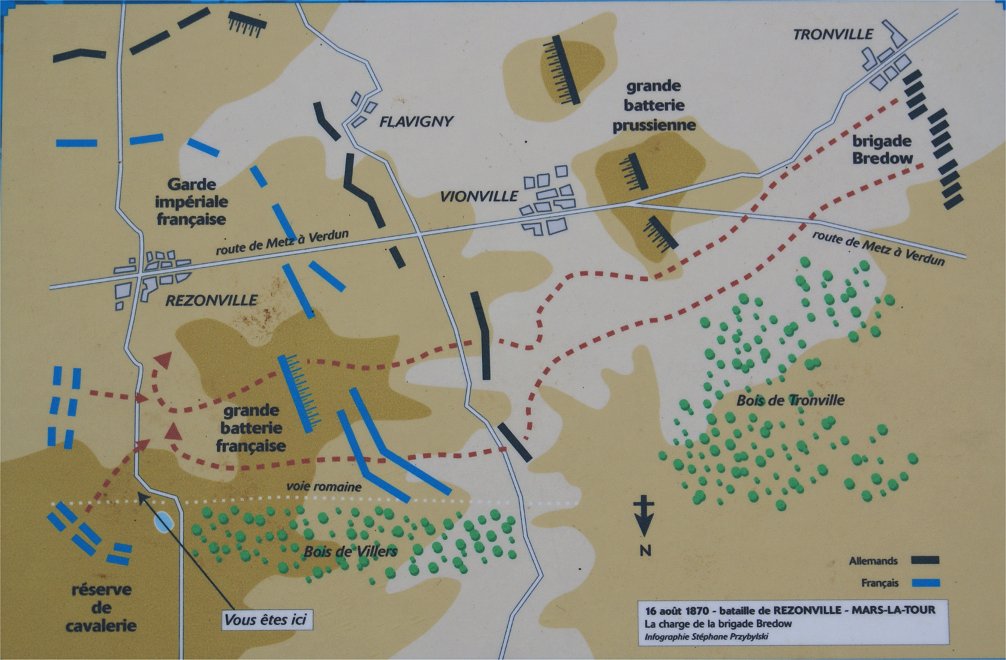 |


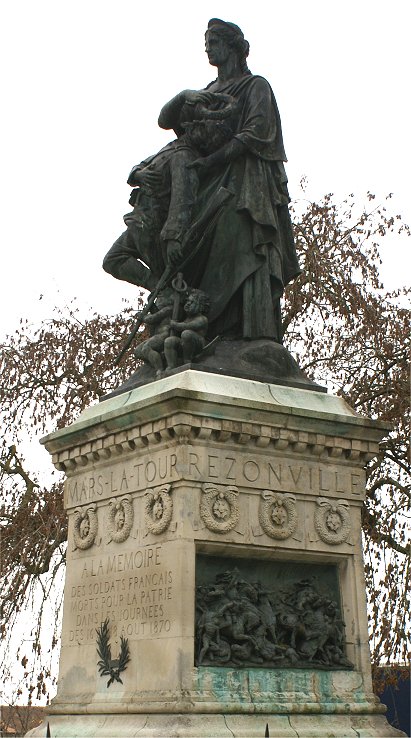
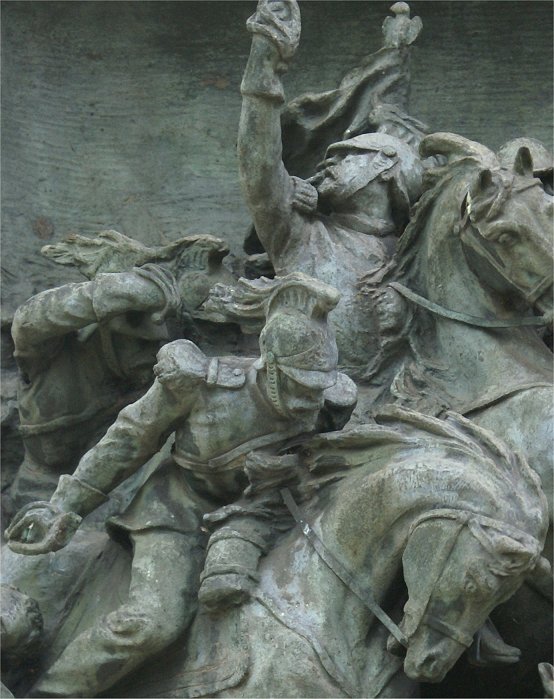
| Roughly 140,000 French troops had failed to break through the
76,000
German troops that eventually arrived on the field. At one time
during
the battle, French superiority may have been as high as 5 to 1.
The
Germans lost 22% of those engaged, or over 15,000 total. The
French lost nearly 17,000 men - proportionally much less.
The battle is now commemorated with a neglected monument in the
town of Mars-la-Tour atop the bones of 1,500 dead. More importantly to the French than the casualties, the main road to Verdun was cut, and Bazaine was unwilling to continue the fight the next day to open up his line of retreat. Instead he fell back toward Metz to make a stand - his army cut off from the rest of France. The main French army was in danger of being destroyed and France opened up to the German invader. On August 18th there would be another battle, Gravelotte-St. Privat. |
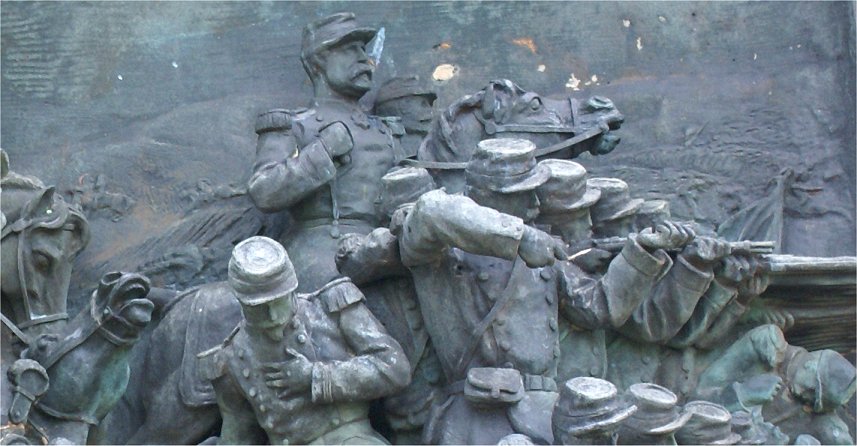 |